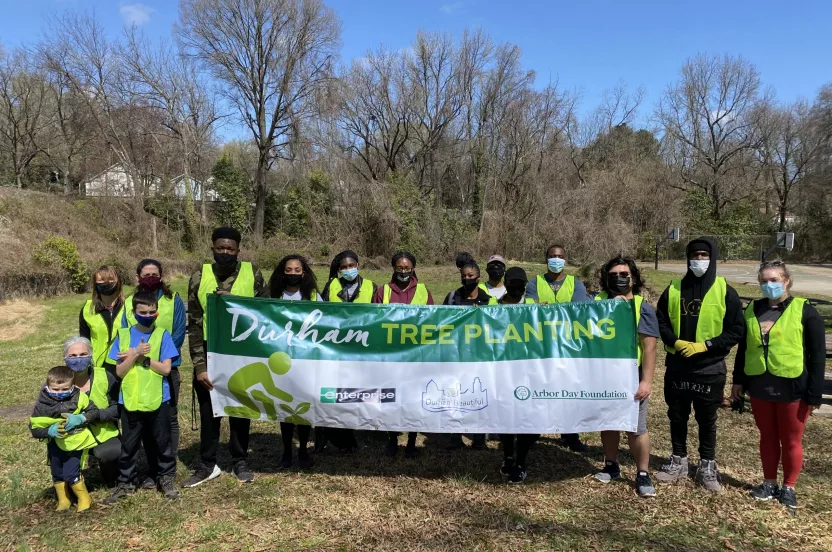Give before midnight on July 31 to double your impact where trees need us most. CHOOSE A PROJECT
The changing climate and unpredictable weather patterns have added extra stress to plants and trees. The bouts of heat in between cold spells and long-periods without precipitation has made it hard for trees to adapt and survive. Some trees are hardier than others and have adjusted just fine. One way to avoid unnecessary stress on trees is to plant the right species for your area and opt for trees that handle some of the more extreme weather patterns you may experience.
These four rugged trees thrive well in warmer climates and are drought-tolerant.
Arizona Cypress
Cupressus arizonica
As the name suggests, this heat and drought-tolerant cypress is native to the southwestern United States and northern Mexico. While it has a limited reach in terms of Hardiness Zones, the Arizona cypress is an excellent choice for windbreaks, erosion control, and landscape ornamentals.
Hardiness Zones 7-9
Japanese Zelkova
Zelkova serrata
The Japanese Zelkova is a good street and shade tree that has an appealing vase-shaped form with a rounded crown. Green leaves turn yellow, copper, orange or deep red to purplish-red in fall, putting on a showy display. The peeling bark on older trees exposes orange patches, which can be quite impressive.
Hardiness Zones 5-8
Read: 10 Drought-Tolerant Trees That Will Throw Shade
White Fir
Abies concolor
Long ago, naturalist Donald Peattie recognized the beauty and adaptability of the white fir and accurately predicted that its future “lies in its value as an ornamental.” Its shape, color, and ability to thrive on harsh sites has made the tree a favorite for urban landscaping.
Hardiness Zones 4-7
Kentucky Coffeetree
Gymnocladus dioicus
Drought-resistant. Tolerant of pollution. Adaptable to a variety of soils. With its reputation as a tough species, the Kentucky coffeetree is an excellent choice for parks, golf courses and other large areas. It is also widely used as an ornamental or street tree.
The tree’s picturesque profile stands out in all seasons and can be attributed to a unique growth habit of coarse, ascending branches that often form a narrow crown. Tree expert Michael Dirr pointed out that there are “certainly no two exactly alike.”
Hardiness zones 3-8
Visit the tree nursery to see what else will work for your yard.








